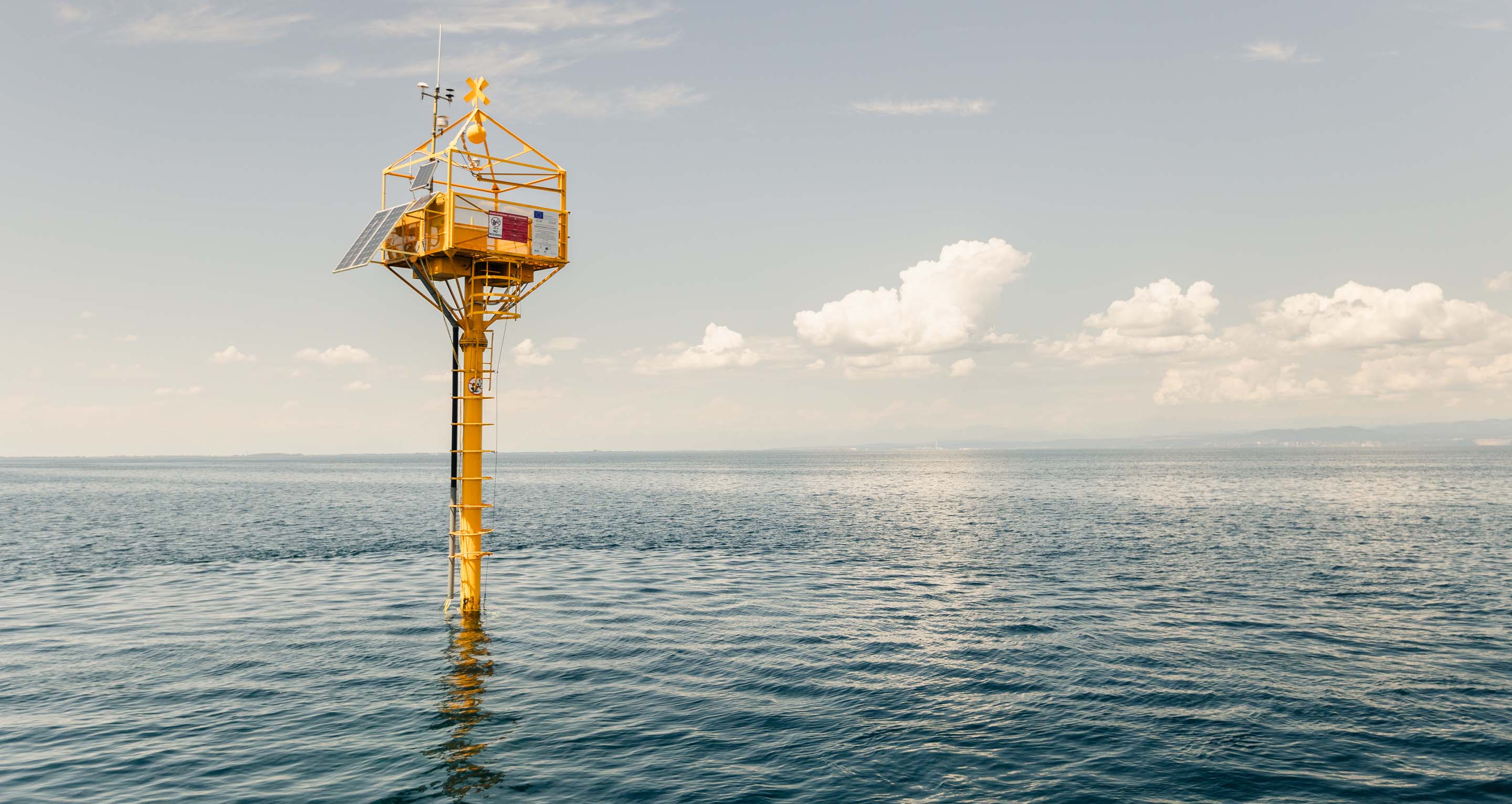
Right in the center of the Gulf of Trieste, the yellow Paloma station buoy rises 9 meters high, encompassed by miles of deep blue sea and eternal azure skies. This part of the Mediterranean is under-sampled with regards to air-sea exchanges of CO2 and related acidification - therefore measuring greenhouse gas emissions here is of utter importance.
Like a monument in the middle of the sea, the yellow buoy is posing proudly as the king of the abundant ocean. We berth the research vessel to the imposing buoy and while the vessel is slowly bobbing on the smooth waves, the research team start pulling up the sampling bottles from the water. Dr. Anna Luchetta, representing CNR-ISMAR, is the PI for the ICOS station carbon measurements and she tells us about the buoy:
“We are right in the center of the Gulf, about 15 kilometers from Trieste, the Slovenian coast and Grado, at the deepest point of 25 meters. The buoy has an elastic anchor and is held in position by a weight. This way it can move slightly so it won’t be damaged by the wind or the sea when the waves grow big. It also has underwater instruments, at a depth of 3 meters, that record continuously CO2 concentration data along with other essential parameters. In addition, it has an aerial part 9 meters above sea level, where we collect meteorological data and soon also CO2 dioxide data from the atmosphere.”
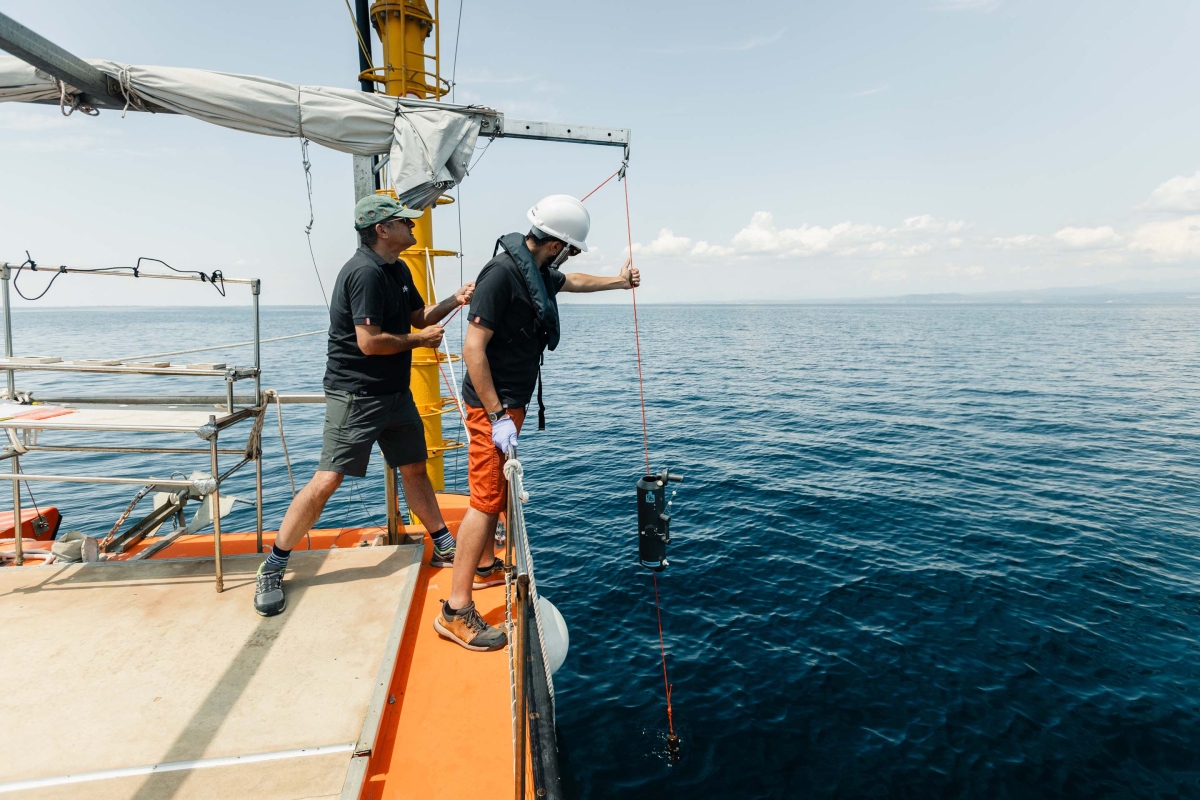
The area is characterised by intense air-sea CO2 fluxes. It is therefore an important point for collecting data - the dense waters that form in winter absorb a lot of CO2 and then flow southwards along the Italian continental margin. The absorbed CO2 is sequestered in these waters, while carrying them towards Southern Italy where they continue to transmit CO2 near the seafloor at basin level also in the Eastern Mediterranean.
“In general, the study of air-sea CO2 flows in the Mediterranean environment is poorly sampled. There is little experimental data, though this is a region highly influenced by anthropic impact. The resident population is high and there is much maritime traffic compared to a global level,” says Anna Luchetta.
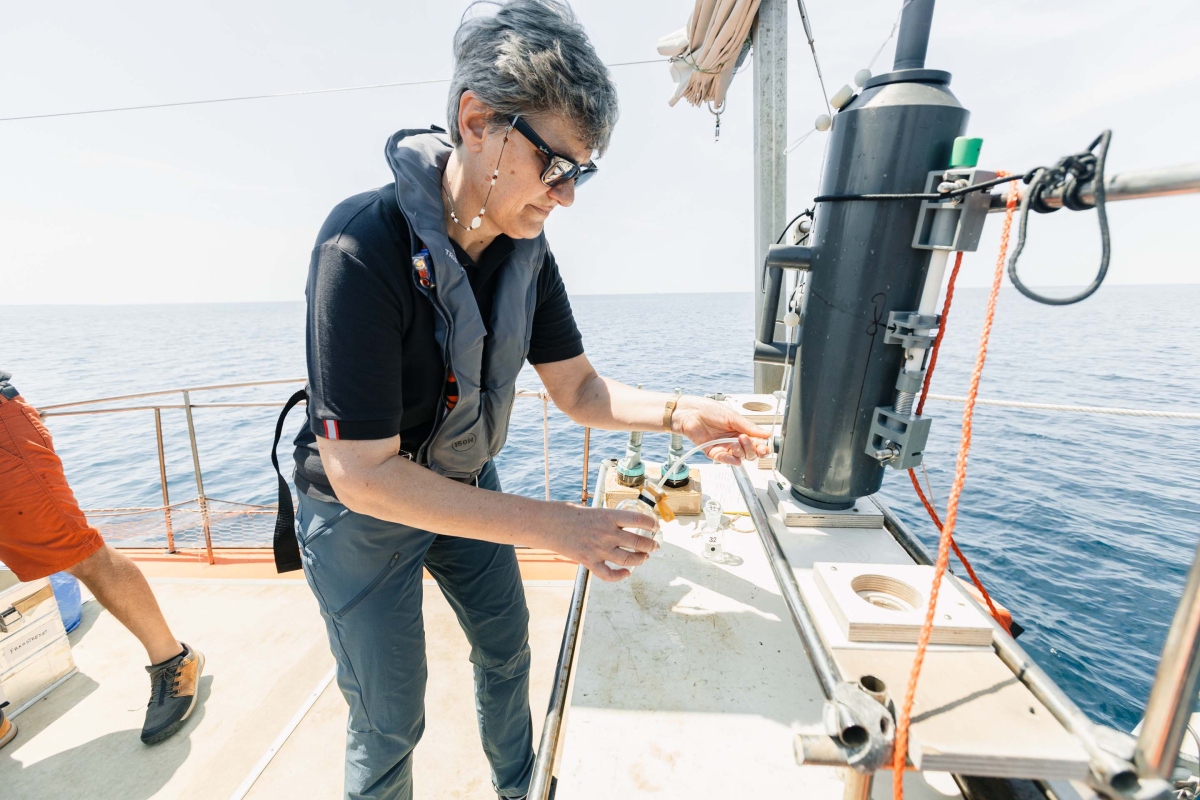
Predicting future ocean CO2 evolution
Dr. Carolina Cantoni is just putting on the safety gear to climb the ladder up to the platform on top of the buoy. She is the operational manager for the station. While securing the helmet on her head, she speaks with passion of the work at the station:
“The sea and oceans absorb between 22-25 percent of the carbon dioxide emitted. Our data can be used not only for local studies but also for the validation of biogeochemical models that can predict the future evolution of air-sea flows of carbon dioxide. Some of the data can also be used for the validation of satellite maps since satellite data needs measurements made in the field in order to calibrate and validate the results.”
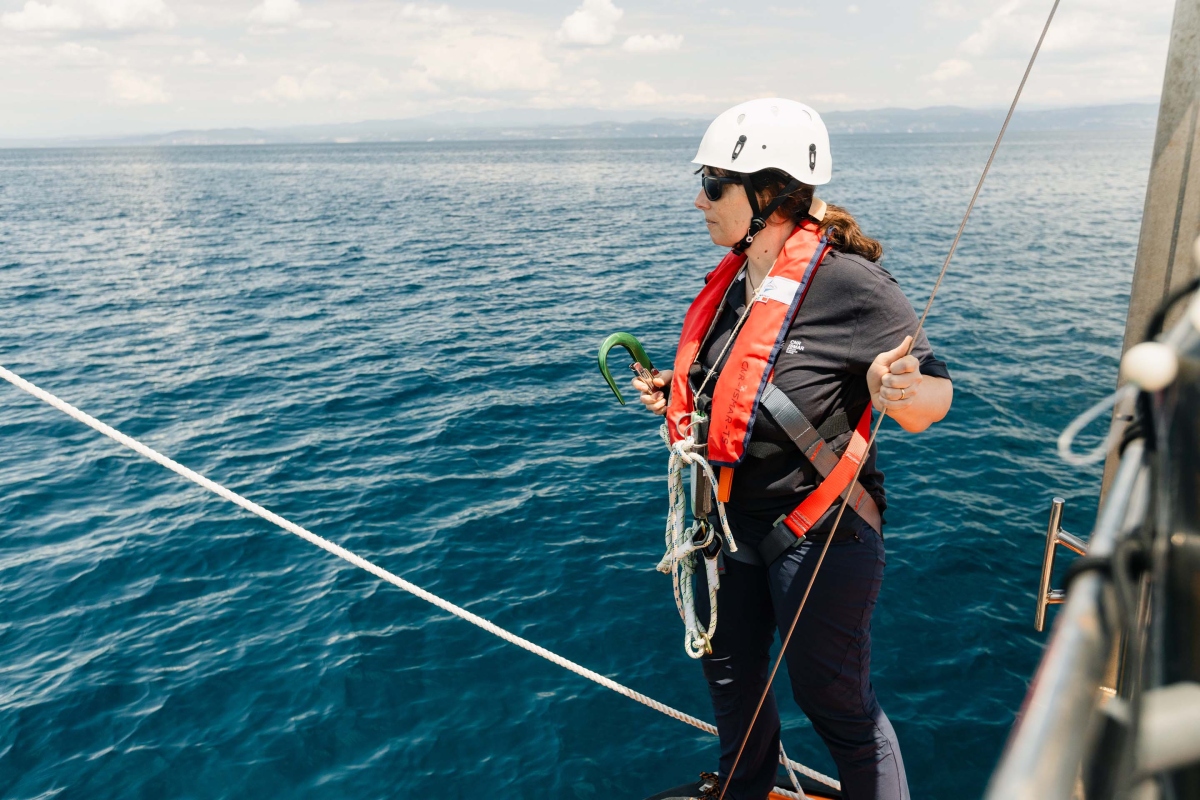
In the last decade, the data collected at the station shows an increase in CO2 concentrations in the atmosphere which correspond with the increase recorded on a general level in other Italian regions. This particular area in northern Italy is highly impacted by maritime traffic from the cities and shipyards for construction of large cruise ships.
“It is expected that the concentration of carbon dioxide continues to increase,” says Carolina.
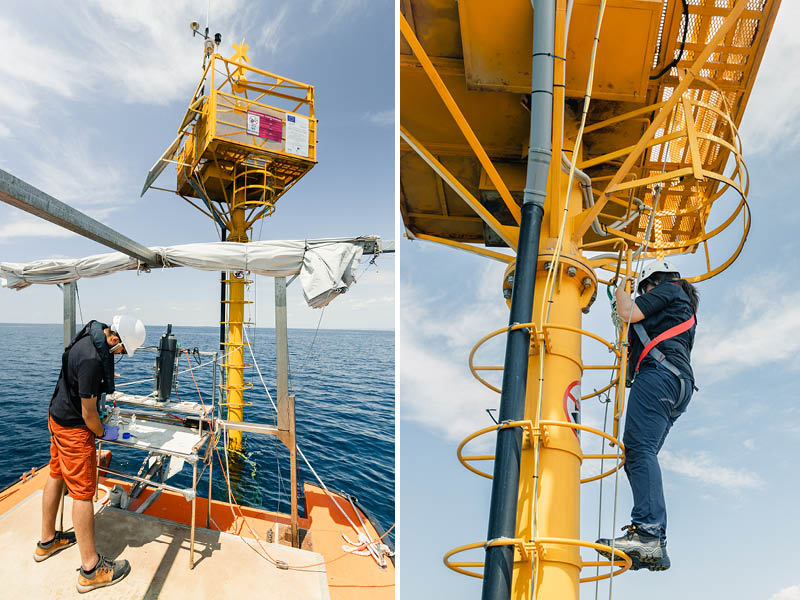
Advantages of the ICOS network
The Paloma station contributes to the ICOS network by collecting monthly time series of discrete samples (since 2008) and sensor data (since 2013), continuously recording parameters such as temperature, salinity, dissolved CO2, oxygen, pH and alkalinity. The data is then checked in their own laboratory and sent to the ICOS Ocean thematic center for additional quality controls. If the data is good, it is then sent to the ICOS Carbon Portal with open access for anyone.
“Thanks to ICOS, we have the possibility of always staying updated on new instruments and tools,” says Carolina and continues:
“For us, joining the ICOS network meant becoming part of a stable community of colleagues who, at a very high level, deal with studies of air and sea flows of carbon dioxide. This allows us to get support and better data from our tools. In addition, the fact of having standardized data allows us to integrate data quickly between one station and another. It also helps us analyze events, such as a heat waves or periods of drought at a European level, since all the data from all the stations can easily be connected and compared.”
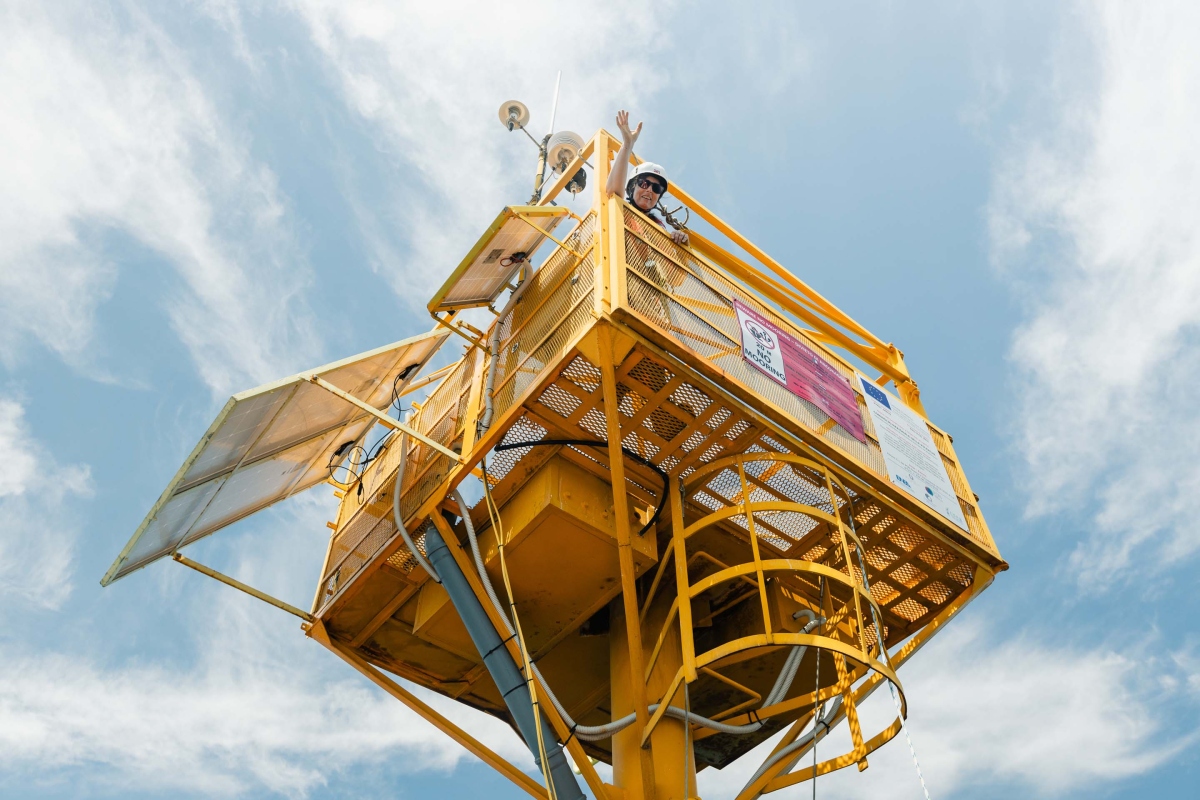
The research team is also pleased to get more visibility for their data as part of the ICOS network:
“The data is not only used by us for local studies, but can and is also used at a European level. This is something that makes us very proud to contribute not only to our small sphere but also to a European framework of global studies,” says Carolina.
At the service of the environment
Both Anna and Carolina are visibly passionate about the job that they do:
“This job means many things to me at once. I like it because it offers the opportunity to work outdoors and to be able to contribute to a topic like climate change which is really important. Above all, when extreme events such as floods or strong winds occur, it is interesting to be able to follow the data in real time. We are very pleased when our instruments manage to overcome these challenging moments, working well and giving us good data,” says Anna. With a dreamy and satisfied smile on her face, Carolina adds:
“I graduated in chemistry – as a chemist one pictures her life locked in a laboratory. Instead, when I had the opportunity as a young graduate to start working in the field putting my knowledge of chemistry at the service of the environment, I said this is the job I want to do.”
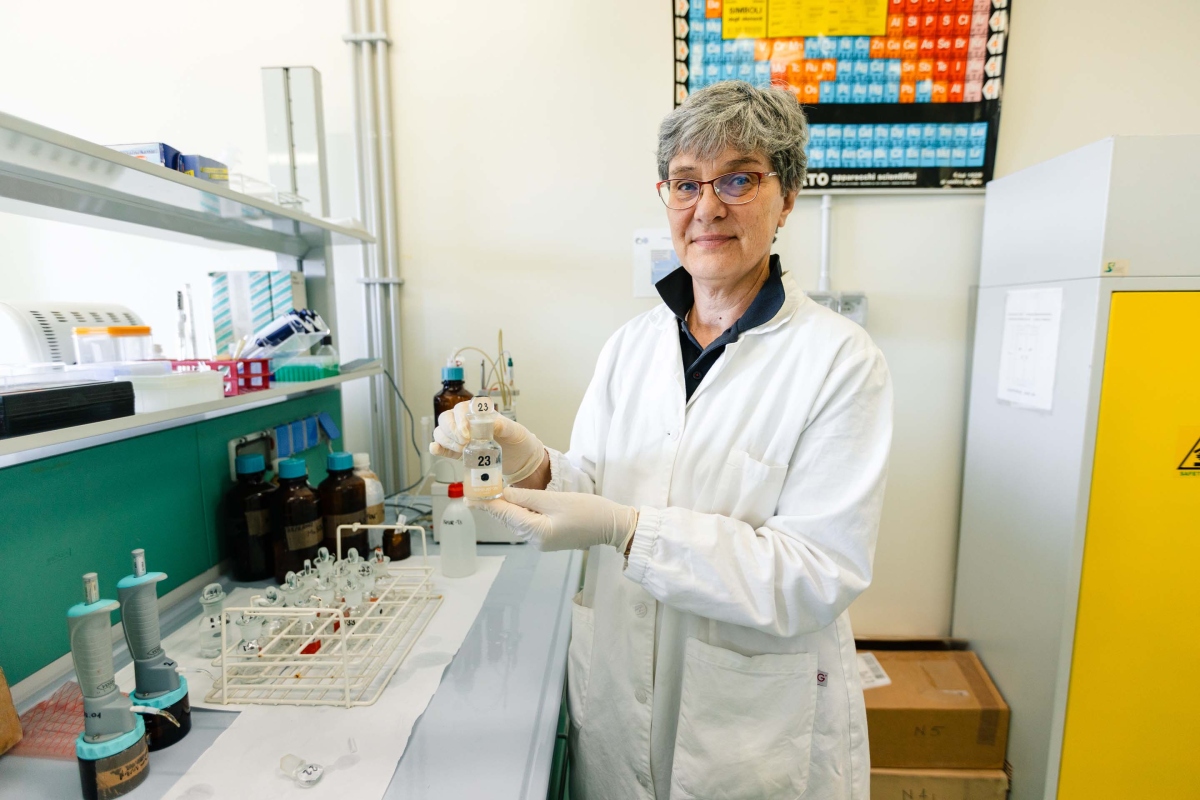
Text: Charlotta Henry, ICOS
Photo: Pekka Pelkonen